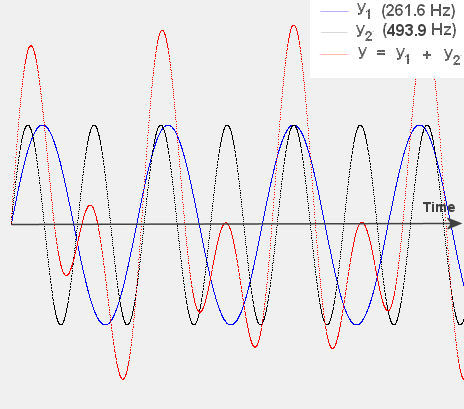SOUNDS
AND VIBRATIONS
As
Quantum physics has now revealed to us, anything and everything
consists of vibration. The primary essence of any object or phenomena,
then, could be thought of as its own unique pattern, or composite
patterns, of vibration.
It is said that the language of Sanskrut itself arises from these
vary root sounds or vibrations of the Universe. The various vowels
and consonants that make up Sanskrut words represent these core
sounds, known as bijas. Whilst in states of deep resonance with
the cosmos (in other words, while in meditation), the Rishis, the
ancient spiritual scientists, could perceive these beej sounds;
and from this profound sense of perception, they recognized the
inherent sounds of each and every thing.
A Sanskrut word, then, is not merely a word chosen to name something,
but an actual reflection of the inherent ‘sound’ of
that object, concept or phenomena. In fact, proper, or rather, perfect,
pronunciation of Sanskrut words, it is told, can replicate the exact
nature, or essence, of that which it is referring too.
It is also told that if one’s mind was utterly pure, then
upon hearing this perfectly pronounced symbol, the Sanskrut word,
the image of that object, idea, etc., would immediately appear within
the mind and the ‘field of understanding’ of this individual,
even if they had never seen or heard of this thing or idea before.
Likewise, the perfect pronunciation of a Sanskrut word has the power
to manifest and/or influence that particular thing. Sanskrut, for
this very reason, is referred to as the ‘perfect language’.
This is, at heart, the essence of one of the principles behind mantra
chanting in the vedic tradition. Today there are very few who possess
this precise knowledge and ability of ‘perfect enunciation’,
and fewer still who are pure enough of mind to be able to receive
the innate truths of this language upon hearing it.
Chand's :

Sound
Wave Form
Chand's,
the study of Vedic meter, is one of the six Vedang (limb of the
Ved). When the celestial Ganga descends on earth, it is held in
the matted locks of Lord Siva and flows down from the Gangotri glacier
at a rapid pace. By the time it reaches the destination, the Bay
of Bengal delta, its speed is very much reduced and it meanders
along the way. The rhythm of the flow changes with time. This rhythm
is called chandas. Mantra and stotra as well as all vedic hymns
are received in certain chand's. Chand's is the specific rhythm
with which the sound flows. None of the ancient works dealing exclusively
with chandas have survived. Some of the surviving works are the
Chand-Shashtra and we have good sources in the Agni Puran, Bharatiya
Natya Sastra (Ch.15), and Brhat Samhita (Ch.104). We start learning
Chand's from the teachings of Sri Acyutanand.
Pad
:
In
order to study the quality of the sound wave form the ancients employed
various techniques. One of them was the concept of pad meaning foot.
The basic pada consists of 4 syllables. Human beings have two feet
(dvi-pad) and the root meter for their movement would be defined
by 2×4=8 syllables. This is called a pada or step and is referred
to as gayatri-pada. Sri Acyutanand explains this as sa-sa-ba-da
pa-ra-ra-ja.
Using the pada (4 syllable foot) we can explain the root of some
of the chand's – dvipad viraj (20), gayatri (24), usnih (28),
anustubh (32), brhati (36), pañkti (40), tristubh (44), and
jagati (48). However, all of these are really not multiples of the
pada (8 syllables).

